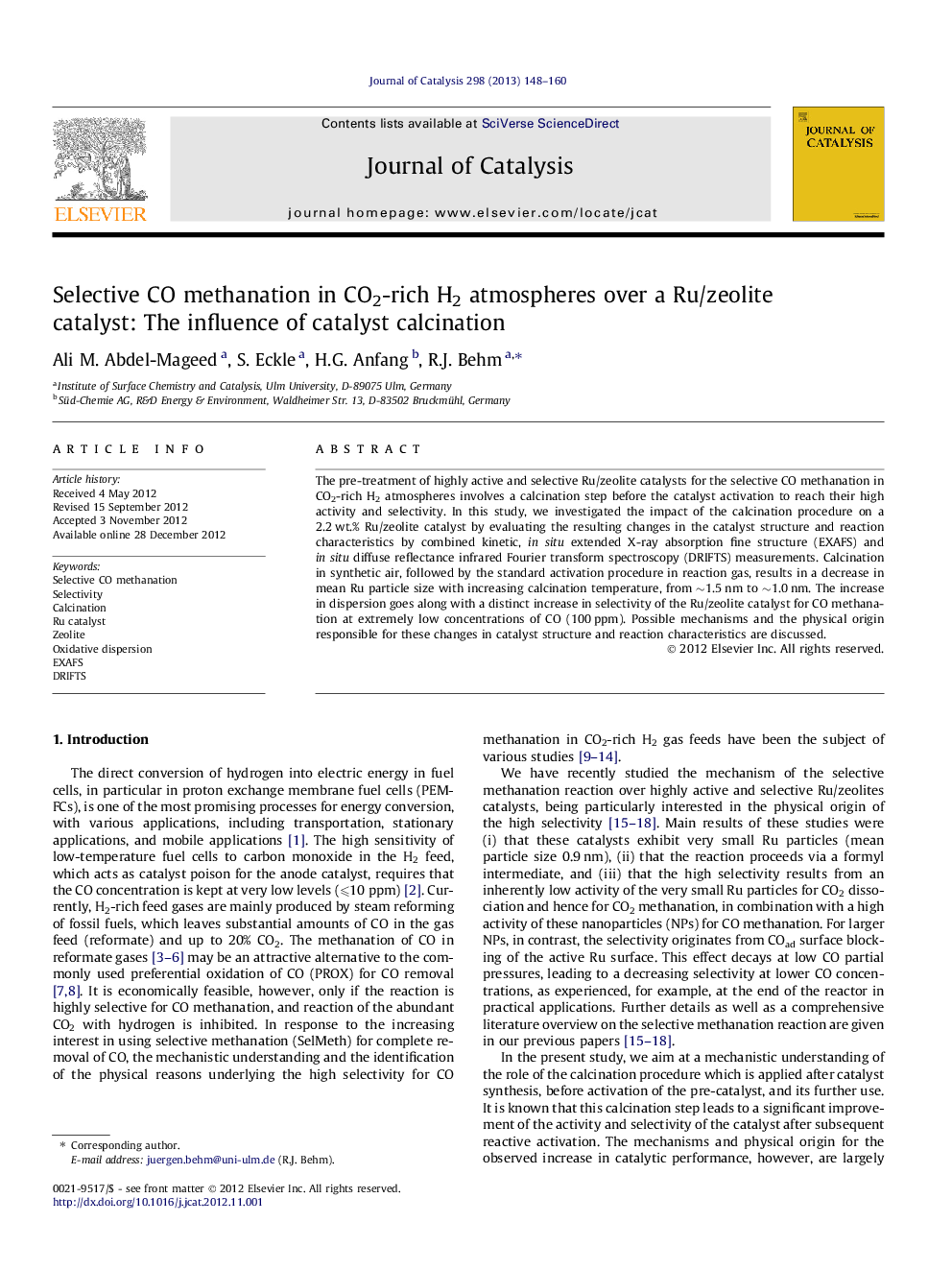| Article ID | Journal | Published Year | Pages | File Type |
|---|---|---|---|---|
| 61317 | Journal of Catalysis | 2013 | 13 Pages |
The pre-treatment of highly active and selective Ru/zeolite catalysts for the selective CO methanation in CO2-rich H2 atmospheres involves a calcination step before the catalyst activation to reach their high activity and selectivity. In this study, we investigated the impact of the calcination procedure on a 2.2 wt.% Ru/zeolite catalyst by evaluating the resulting changes in the catalyst structure and reaction characteristics by combined kinetic, in situ extended X-ray absorption fine structure (EXAFS) and in situ diffuse reflectance infrared Fourier transform spectroscopy (DRIFTS) measurements. Calcination in synthetic air, followed by the standard activation procedure in reaction gas, results in a decrease in mean Ru particle size with increasing calcination temperature, from ∼1.5 nm to ∼1.0 nm. The increase in dispersion goes along with a distinct increase in selectivity of the Ru/zeolite catalyst for CO methanation at extremely low concentrations of CO (100 ppm). Possible mechanisms and the physical origin responsible for these changes in catalyst structure and reaction characteristics are discussed.
Graphical abstractPre-calcination of the catalyst is decisive for the performance of a Ru/zeolite catalyst in the selective CO methanation in CO2-rich reformate.Figure optionsDownload full-size imageDownload high-quality image (91 K)Download as PowerPoint slideHighlights► Calcination of the Ru/zeolite catalyst results in a Ru particle size decrease from 1.5 to 1.0 nm. ► The decrease in Ru particle size correlates with an increase in selectivity for CO methanation. ► The increase in selectivity is an inherent consequence of the decreasing Ru particle size.
